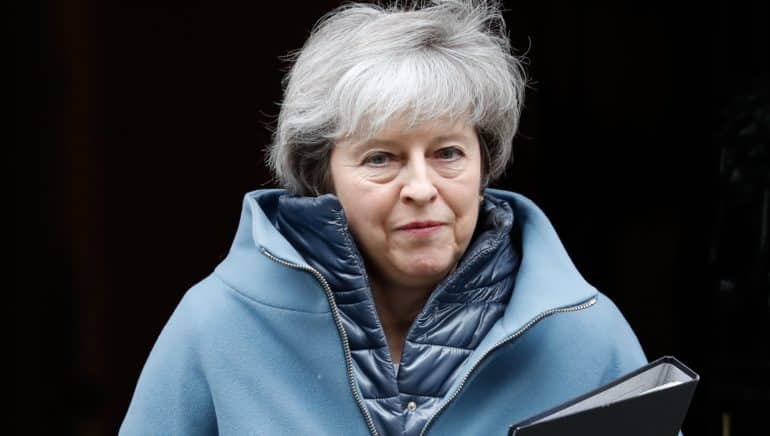Last week, British Prime Minister Theresa May called on members of London’s parliament to “hold their nerves”: As of 29 March, Great Britain will no longer be part of the European Union. However, as the UK Parliament has now once more rejected May’s Brexit deal in a vote on Thursday, it is still not clear what relations between the former Empire and the EU will look like in the future.
Economic data recently provided a glimpse of the Brexit consequences. Gross domestic product (GDP) rose by only 0.2 per cent between October and December 2018 compared to the previous quarter (Source:Nationales Statistikamt (ONS), 11.Februar 2019). In December, production by British companies declined for the fifth consecutive month, with carmakers and the steel industry in particular cutting back production. As the Brexit approaches, experts see the uncertainty businesses are feeling increasing reflected in the investment mood. Even in the event of a compromise there would be a noticeable slowdown over the course of the year.
The magnitude of businesses’ uncertainty is already very much evident: instead of manufacturing the next generation of its SUV model X-Trail for the European market in England as planned, Japanese car manufacturer Nissan will manufacture the model in Japan. Ford is also making arrangements for moving its production from the UK. Aviation and arms corporation Airbus is threatening to shut down factories in the UK in the event of an unregulated EU withdrawal.
“Deal”, or “No Deal”?
Without a proper Brexit treaty the British would suddenly be subject to World Trade Organisation (WTO) rules only. A recent study by the Salzburg Centre of European Studies shows (Source: „Brexit: Folgen für Österreich und die EU“,6. Februar 2019), that a Hard Brexit would not only harm the UK as a business location, but would also result in an estimated immediate drop in the UK industry’s production of up to 7.6 percentage points compared with the previous year. As a result, production in the Austrian industrial sector could decrease by up to 4.5 percentage points, while Germany could suffer a 4.2 percentage point decline. The estimates for France and Italy are even worse.
A study by the Halle Institute for Economic Research (IWH) and the Martin Luther University of Halle-Wittenberg concludes that 612,000 jobs globally would be at risk after an unregulated Brexit: “In Austria, 2,000 jobs could be affected directly, and 4,000 jobs indirectly,” says study author Oliver Holtemöller. The study assumes that Britain’s imports would decline by 25 per cent as a result of an unregulated EU withdrawal.

© APA
With the – for now – once again rejected Brexit agreement, little would change economically until the end of 2020. The British would have to continue to comply with EU law, but no longer participate, explains Stefan Griller, Professor of European Law at the University of Salzburg. According to the university’s projections, this scenario would have a much smaller impact on industrial production in the UK and EU countries.
Conservatives, however, are particularly opposed to the border regulation between Northern Ireland and Ireland laid out in May’s deal. The EU does not want border controls between Northern Ireland and Ireland. The British, on the other hand, do not want border controls between the British mainland and Northern Ireland. A supplementary agreement to the Brexit treaty could at least partially mitigate this issue. But in order to negotiate such an agreement, Theresa May not only needs her members to “keep calm”, she also requires more time and the members to support her work. However, this the UK MPs clearly refused in the vote on Thursday. Furthermore, the PM also lost support among her own party again, which not only weakens her negotiating position in Brussels, but ultimately also makes a regulated and thus smoother Brexit less likely than ever.
Legal note:
Prognoses are no reliable indicator for future performance.

